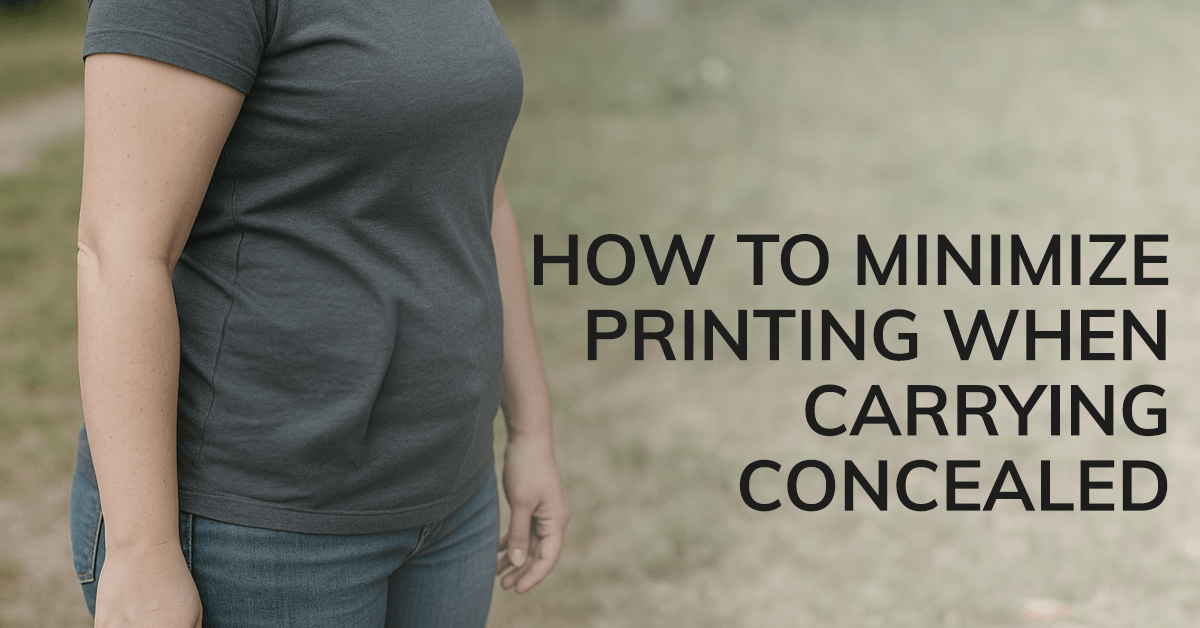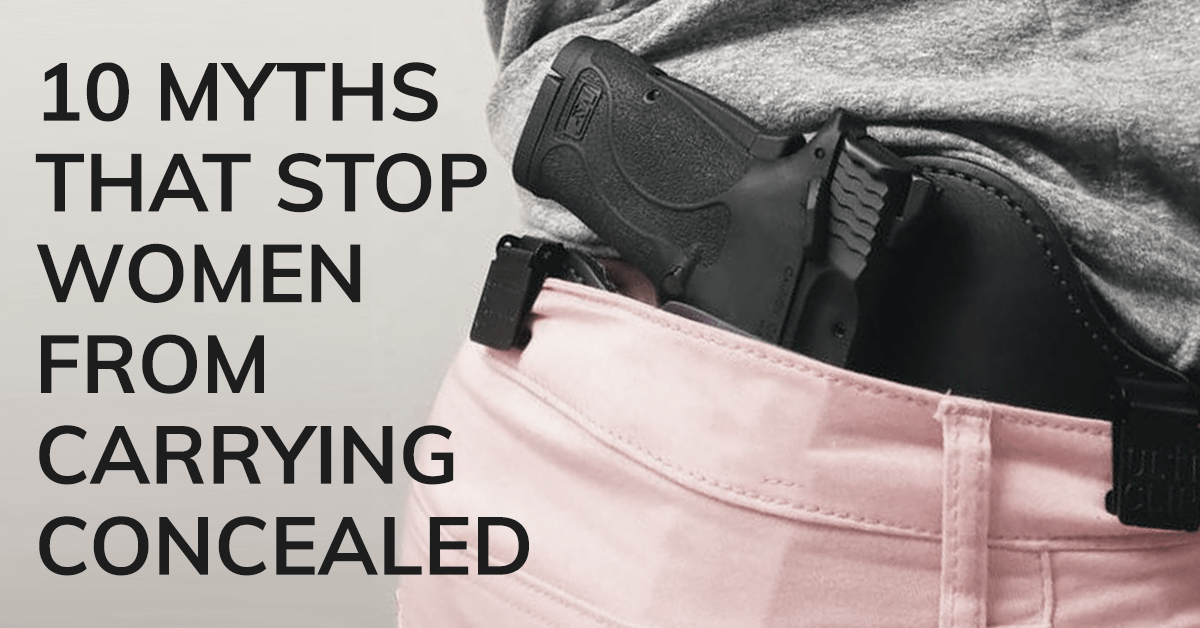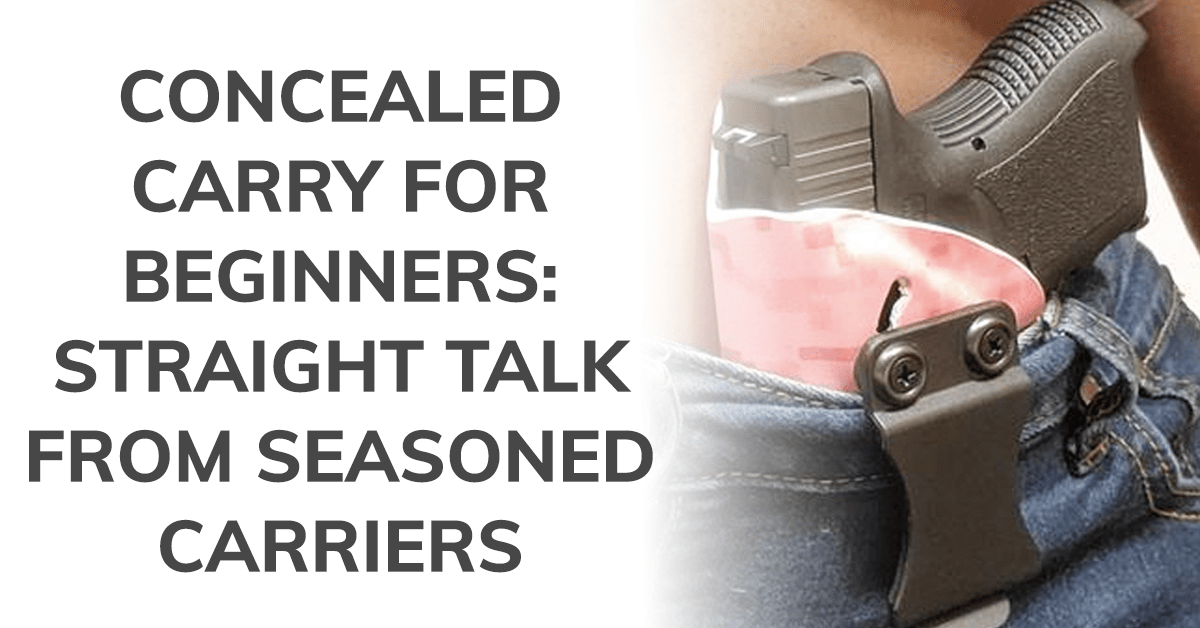Orders Over $100 Ship FREE (USA)!
Orders Over $100 Ship FREE (USA)!
CONCEALED CARRY
(Apparel with holster pockets or concealed-carry features)
PARTS & GEAR
RANGE STYLE
Gift shopping & not sure about size or style? Give a gift card instead!
GIFT IDEAS
EXPLORE
BFCM Sale 20% Off every item! EXTENDED
Black Friday & Cyber Monday EXTENDED: Indulge in Luxury, Pay Less.
Concealed Carry Choices: On-Body Versus Off-Body
4 min read
Starting your concealed carry journey is a deeply personal choice, with lots of considerations to keep in mind. It's about finding the perfect balance between safety, accessibility, and fitting it into your everyday life.
One of the key decisions you'll face as you begin to carry is whether to choose on-body or off-body carry. Each has its own implications for your daily routine, and there are several factors to consider when making your choice. Here’s a guide to help you make an informed decision that fits your particular lifestyle.
On-Body Carry
Carrying a firearm on-body means securing your firearm directly on you, typically using holsters designed for different carry positions. The two methods of on-body carry are inside-the-waistband (IWB) and outside-the-waistband (OWB). Choosing between IWB and OWB carry depends on a balance of factors, including your daily activities and the types of clothing you usually wear.
Advantages of On-Body Carry:
Accessibility: carrying your firearm on your body offers immediate access (it's always within arm's reach). This method provides the quickest access in critical situations, where every second counts.
Control: On-body carry provides a higher level of control over the firearm, minimizing the risk of unauthorized access and ensuring the safety of both the carrier and those around them.
Variety of gear options: Whether it's finding that just-right holster or choosing accessories to increase your comfort, there's no shortage of gear options out there to suit your specific needs and preferences.
Challenges of On-Body Carry:
Holster and placement selection: Finding the right holster that balances security, accessibility, and comfort can feel like a journey in itself. There’s often some trial and error involved - you may have to try several carry positions and types of holsters until you find something that works for your body type and lifestyle.
Adapting your wardrobe: Certain outfits can complicate your ability to conceal your firearm. The challenge of "printing," where the outline of your firearm becomes visible through your clothes, is a concern that requires careful consideration of your clothing choices to make sure you’re carrying discreetly.
Training and familiarity: Both IWB and OWB on-body carry methods demand a commitment to practicing drawing and shooting accurately to ensure safety and proficiency. If you ever find yourself in a situation where you need to defend yourself, being quick on your feet and sure of your skills is crucial.
Physical Comfort Considerations: Your comfort level with on-body carry can vary widely based on your body shape and preferences. For some, it might not always be the most comfortable option.
Off-Body Carry
Carrying off-body means keeping your firearm in an accessory separate from your clothing, like a purse, backpack, briefcase, or specially designed concealment bag. This method offers an alternative for those who find on-body carry uncomfortable or impractical because of attire, body type, or other circumstances. Off-body carry can offer greater flexibility in how and where you carry your firearm, but it also comes with its own unique set of considerations.
Advantages of Off-Body Carry:
Flexibility with any outfit: Off-body carry lets you keep your firearm handy without having to dress around it. This means you can wear whatever you want, from business suits to formal wear, without worrying about how you’re going to conceal your firearm.
Reduces physical discomfort: On-body carry methods can lead to discomfort for some individuals. This is especially true in scenarios that involve long periods of sitting or standing, where a holster might press against your body in an uncomfortable way or restrict movement.
Convenience and adaptability: This method simplifies keeping your firearm within reach while allowing you the flexibility to switch things up to match your style for the day. Whether you're heading to the gym, going to work, or attending a social event, you can easily transition to a different purse, pack, or bag without the need to reconfigure your setup.
Challenges of Off-Body Carry:
Awareness and Security: Opting for off-body carry requires an additional layer of vigilance. It's essential to keep a constant eye on your bag, making sure it's never left unattended or out of your reach. This heightened level of awareness is non-negotiable - the separation from your firearm, even for a split second, could lead to dangerous situations or the potential for theft.
Accessibility and speed: One of the significant drawbacks of off-body carry is the potential delay in accessing your firearm when you need it most. In a high-stress situation, the extra seconds it takes to retrieve your firearm from a bag could be critical. This challenge requires strategic planning and practice to mitigate, ensuring you can access your firearm swiftly and safely.
Consistent carry position: Maintaining a consistent carry position within your bag is essential for effective off-body carry. Without proper placement, you may find yourself fumbling for your firearm, which can be detrimental in a defensive scenario. Making sure your firearm is always in a dedicated, easily accessible compartment is key.
Making Your Choice
Your decision between on-body and off-body carry should be a reflection of your daily life, personal comfort level with carrying, and the unique scenarios you encounter. It's a choice that will likely evolve over time because you’ll have to adapt to any changes in your lifestyle or preferences.
Consider your daily routine: Reflect on your typical day, your activities, and how you dress. These factors can significantly influence which carry method best suits your needs, offering comfort and readiness.
Embrace continuous learning: Regardless of which method you choose, you need to prioritize ongoing training and practice. Becoming proficient with your carry method is not a one-time task but a continuous commitment. It ensures that your decision to carry is not only responsible but also a natural extension of your safety strategy.
Choosing between on-body or off-body carry isn't just about where you put your firearm, it's about finding what feels right for you and meshes well with how you live your life. This decision is personal and should make you feel both secure and responsible. Think of it this way - it's not just about being ready for the "what ifs." It’s about making a conscious choice to be more prepared, aware, and empowered in your daily life.
And remember, you don’t have to choose only one method! It’s perfectly acceptable to switch back and forth between on-body and off-body carry depending on your daily activities, clothing choices, or specific situations. For example, you might prefer on-body carry for quick errands or when wearing clothing that easily conceals your firearm, but switch to off-body carry for long hours at the office or during events where on-body carry isn't practical.
Also in Carrying a Gun: Making the Decision

How to Minimize Printing When Carrying Concealed
3 min read
Here are a few tips to help reduce printing and build your confidence to carry more comfortably and discreetly.

10 Myths That Stop Women from Carrying Concealed
5 min read
We're clearing up some common myths so you can feel more confident about your decision to carry.

Concealed Carry for Beginners: Straight Talk from Seasoned Carriers
4 min read
Discover essential tips for concealed carry beginners from experienced carriers. Learn practical advice on training, mindset, and responsibility.

